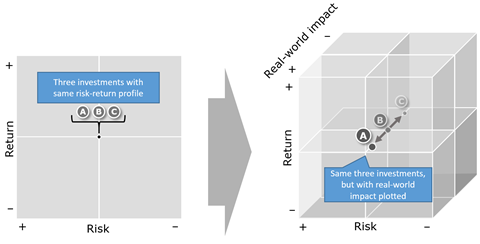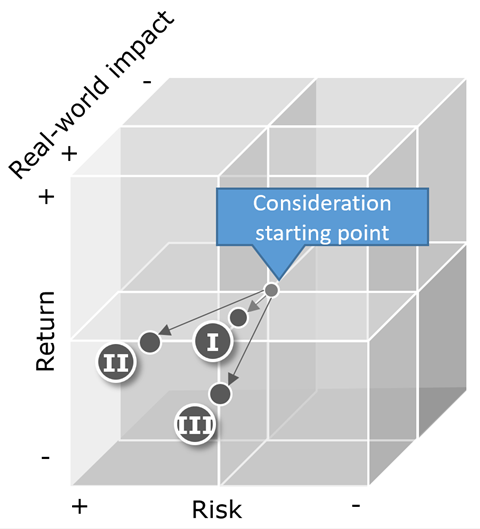As discussed in first three steps, there are a number ways in which the investment industry is evolving, and is likely to evolve in the coming years. Before proceeding to Step 4: Strategy formulation and creation, it may be useful to assess how ready the organisation is for these changes.
This can be measured through your answers to a few key questions. The answers should flow naturally from your vision, mission and investment principles – if they do not, it will be necessary to revisit those earlier steps as you start to evaluate potential investment strategies.
- Does your fiduciary duty extend beyond strictly financial benefits for stakeholders?
- Is positive real-world impact an explicit part of your primary objective for investment results?
- Do you view ESG factors as material (risks and/or opportunities)?
- Do you incorporate ESG factors into your investment analysis? There is range to which asset owners presently incorporate ESG factors, starting from basic performance and norm-based screening to integrating ownership activities and ESG factors within traditional investment decision-making criteria.
- Do you actively engage with your invested companies? This relates to engaging with companies once an investment is made (e.g. voting at Annual General Meetings, or meeting with management to influence company strategy).
While there is a range of possible answers for each question (e.g. the degree to which you incorporate ESG factors into your investment analysis), answering in a yes/no format will build the clearest profile of the organisation’s overall position on these issues. An asset owner answering yes to all of the questions above may consider their strategy highly likely to be future-proofed against a changing investment landscape, whereas answering no to everything above may be considered a warning sign that the strategy has a short shelf-life and will need to be re-evaluated as the operating environment evolves.
You should evaluate whether you are comfortable that the resulting profile is the right fit for your organisation, including whether that profile is compatible with your agreed vision, mission and investment principles. If your readiness profile is in line with your vision, mission and investment principles but you aspire to a different profile, it may be helpful to revisit those earlier steps.
Real-world impact
This transition is as important for the 21st century as the addition of risk to return was in the 20th.
Answering yes to “Does your fiduciary duty extend beyond strictly financial benefits for stakeholders?” and/or “Is positive real-world impact an explicit part of your primary objective for investment results?” puts an asset owner in agreement with an emerging view that extends the traditional two dimensional view of risk versus return (which should already include all material ESG factors, based on current interpretations of fiduciary duty), with a third dimension that charts the real-world impact that investments can have, on the natural environment and/or society.
This transition is as important for the 21st century as the addition of risk to return was in the 20th. It takes investment strategies to the next level, explicitly creating a macroeconomic environment that supports long-term returns and a sustainable financial system.
In Figure 1, on a 2D view (left) the three investments appear at the same point, as they are not differentiated on risk or return, but on the 3D view (right) they are differentiated along the real economy impact axis. For the investor that considers fiduciary duty to extend beyond strict financial benefits for stakeholders, there is an order of preference amongst the three investments that was not evident when evaluating them in the 2D view.
In Figure 2, where investment I offers improved projected real-world impact over the initial investment for the same projected risk and return, investments II and III should deliver greater real-world impact but at projected higher risk/lower returns respectively. As in Figure 1, any investor considering real-world impact would choose investment I over the initial investment, but only investors that have positive real-world impact as a primary objective would choose investment II or III over the initial investment (e.g. regulated development mandates with hard-coded ethical red flag rules, or thematic investment strategies targeting double bottom line companies).
Each investor will decide what weight to give real-world impact in their choice of investment strategies and investment decisions.
A growing number of investors frame their real-world impact aspirations – as driven by long-term beneficiary considerations – in terms of the UN’s Sustainable Development Goals.
Download the full report
-

How to craft an investment strategy
March 2018
Asset owner strategy guide: how to craft an investment strategy
- 1
- 2
- 3
- 4
- 5
- 6
Currently reading
An evolving industry: Future-proofing the investment strategy
- 7
- 8















